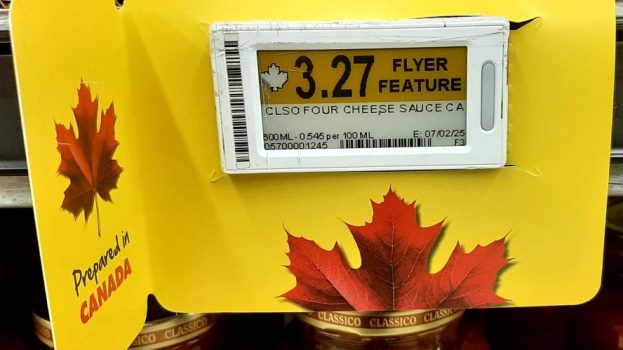
The “Chocolatory” has proven to be revelatory for Kit Kat. The original pop-up was so popular that Nestlé has given it a permanent location – one that’s coming to Toronto’s Yorkdale mall in the fall.
The brand’s popular Chocolatory (versions of which have appeared in places like London, Hong Kong and Johannesburg, as well as in Toronto, where it made its Canadian debut on the hip Queen Street West strip in 2018) focuses on handmaking the product in front of consumers, customizing bars using different varieties of chocolate, as well as supplemental flavourings like dried fruit and nuts.
The Kit Kat store will be located in the designated food and beverage wing of Yorkdale mall, a property which has been tapping into younger shoppers’ desire to participate in a visual social culture, by adding interactive retail installations and concept stores.
The Nestle brand tapped OneMethod (which has helped build retail concepts for brands like Sweet Jesus and La Carnita) and ModelCtzn on the design of the store architecture.
Eileen Whitta, marketing manager for Kit Kat Chocolatory at Nestlé, says the new Yorkdale store is a way to further “test and learn in a new environment” where the confectionery brand can interact with shoppers. According to Whitta, the brand is looking to reach 18- to 34-year-olds, a demo that has shown a growing desire for customization, digitization, experience and unique product launches.
Whitta says the brand will be using digital marketing to drive people to its new store, adding that a part of the new retail strategy is to help “premiumize” Kit Kat in a category where consumers are demanding more elevated experiences from CPG brands.
Jordan LeBel, aka, “Dr. Chocolate,” is a Concordia University marketing professor who researches pleasure food marketing. He tells strategy that “premium,” in the context of this chocolate bar, is really about product innovation than it is about perceptions of being exclusive or refined, like say a Lindt or Godiva.
The Toronto store, LeBel says, is not only a strategic means of distribution (competition for point of sale is increasing and it’s difficult to get more SKUs into your corner store, he says), it’s a “vector to pass on future innovations to consumers.” According to LeBel, Kit Kat has always had innovation as a core part of its DNA, particularly in Japan, where unique Kit Kat flavours, like Hokkaido roasted corn, hot chili and lemon cheesecake, have created buzz for the brand beyond its borders.
A recent innovation LeBel cites is Nestlé’s novel use of cacao pulp (typically a discarded by-product) and how Kit Kat is fashioning a dark chocolate bar from it. And in May, Kit Kat released Kit Kat Ruby bars in Canada (it was the first major manufacturer to start using Callebaut’s ruby chocolate, a newly discovered variety, in mass production).
He says that the Kit Kat store, where consumers can both see the brand’s chocolatiers creating the product and experience making it for themselves, is a savvy move in allowing consumers to feel like they are a part of the innovation process. (He contrasts the experiential move with mass marketing campaigns by Lindt, which he says, romanticize the chocolate making process as one that’s done by specialists in white top hats, more removed from the general public.)
LeBel says the Chocolatory model is similar to what’s proven successful with other CPG-to-store efforts, such as the Nutella Café or M&M’s World, and says the brand has ample experience testing the do-it-yourself concept (through the Chocolatory pop-ups around the globe), which he describes as fun and mindless, yet playful and tasty. However, he warns, these concepts sometimes fall short on the product education side of things and “when you give consumers a chance to fabricate their own stuff, it’s not nearly as good as what industry comes up with.”
























